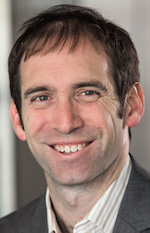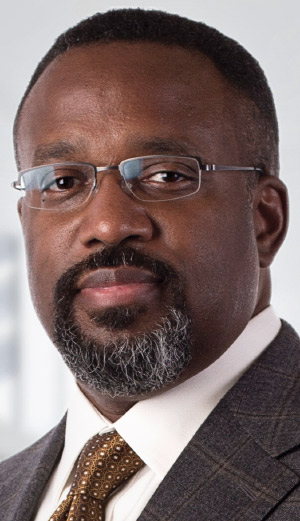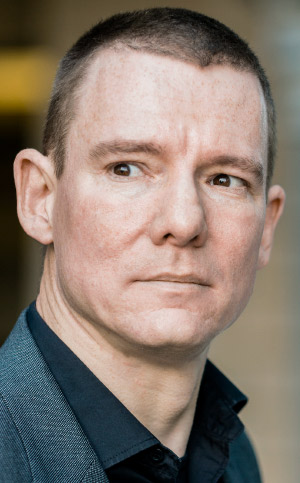

 Earlier this week, I came across a working paper from Professor Peter Swire - a highly respected attorney, professor, and policy expert. Swire's paper, entitled "Online Privacy and ISPs", argues that ISPs have limited capability to monitor users' online activity. The paper argues that ISPs have limited visibility into users' online activity for three reasons: (1) users are increasingly using many devices and connections, so any single ISP is the conduit of only a fraction of a typical user's activity; (2) end-to-end encryption is becoming more pervasive, which limits ISPs' ability to glean information about user activity; and (3) users are increasingly shifting to VPNs to send traffic. more
Earlier this week, I came across a working paper from Professor Peter Swire - a highly respected attorney, professor, and policy expert. Swire's paper, entitled "Online Privacy and ISPs", argues that ISPs have limited capability to monitor users' online activity. The paper argues that ISPs have limited visibility into users' online activity for three reasons: (1) users are increasingly using many devices and connections, so any single ISP is the conduit of only a fraction of a typical user's activity; (2) end-to-end encryption is becoming more pervasive, which limits ISPs' ability to glean information about user activity; and (3) users are increasingly shifting to VPNs to send traffic. more
 Do you know what all these acronyms and abbreviations mean related to cellular networks and the Internet of Things (IoT)? MTC, Cat-0, Cat-1, Cat-M1, LTE-M, NB-IoT, EC-GSM, LPWA, eDRX, PSM... I certainly didn't, but Tuomas Tirronen at Ericsson Research wrote a blog post titled "Cellular IoT alphabet soup" where he explained all of this for those of us who might be interested. more
Do you know what all these acronyms and abbreviations mean related to cellular networks and the Internet of Things (IoT)? MTC, Cat-0, Cat-1, Cat-M1, LTE-M, NB-IoT, EC-GSM, LPWA, eDRX, PSM... I certainly didn't, but Tuomas Tirronen at Ericsson Research wrote a blog post titled "Cellular IoT alphabet soup" where he explained all of this for those of us who might be interested. more
 When 2015 began, there were several million IPv4 numbers still in the American Registry for Internet Numbers (ARIN) IPv4 free pool, ARIN was processing 4-5 unique IPv4 transfer transactions per month, and fewer than 5 million numbers had been transferred publicly in the prior 12 months. The end of 2015 told a different story. In late September, the ARIN free pool was depleted. more
When 2015 began, there were several million IPv4 numbers still in the American Registry for Internet Numbers (ARIN) IPv4 free pool, ARIN was processing 4-5 unique IPv4 transfer transactions per month, and fewer than 5 million numbers had been transferred publicly in the prior 12 months. The end of 2015 told a different story. In late September, the ARIN free pool was depleted. more
 The North American Network Operators Group (NANOG) continues to be one of the major gatherings on network operators and admins, together with the folk who work to meet the various needs of this community. Their program committee produces a program that never fails to provide thought provoking interest. Here are my reactions to some of the presentations I heard at NANOG 66, held in San Diego in February. more
The North American Network Operators Group (NANOG) continues to be one of the major gatherings on network operators and admins, together with the folk who work to meet the various needs of this community. Their program committee produces a program that never fails to provide thought provoking interest. Here are my reactions to some of the presentations I heard at NANOG 66, held in San Diego in February. more
 In its security bulletin, Akamai's Security Intelligence Response Team (SIRT) reported on abuse of DNS Security Extensions (DNSSEC) when mounting a volumetric reflection-amplification attack. This is not news, but I'll use this opportunity to talk a bit about whether there is a trade-off between the increased security provided by DNSSEC and increased size of DNS responses that can be leveraged by the attackers. more
In its security bulletin, Akamai's Security Intelligence Response Team (SIRT) reported on abuse of DNS Security Extensions (DNSSEC) when mounting a volumetric reflection-amplification attack. This is not news, but I'll use this opportunity to talk a bit about whether there is a trade-off between the increased security provided by DNSSEC and increased size of DNS responses that can be leveraged by the attackers. more
 Every year, Verisign iDefense Security Intelligence Services produces its Cyberthreats and Trends Report, which provides an overview of the key cybersecurity trends of the previous year and insight into how Verisign believes those trends will evolve. This report is designed to assist in informing cybersecurity and business operations teams of the critical cyberthreats and trends impacting their enterprises, helping them to anticipate key developments and more effectively triage attacks and allocate their limited resources. more
Every year, Verisign iDefense Security Intelligence Services produces its Cyberthreats and Trends Report, which provides an overview of the key cybersecurity trends of the previous year and insight into how Verisign believes those trends will evolve. This report is designed to assist in informing cybersecurity and business operations teams of the critical cyberthreats and trends impacting their enterprises, helping them to anticipate key developments and more effectively triage attacks and allocate their limited resources. more
 I recently attended a Forum on Internet of Things in Smart Sustainable Cities: A New Age of Smarter Living staged in Singapore on 18 January 2016. The public forum provided a contextual overview to the second meeting of the ITU Study Group 20: IoT and its applications including Smart Cities and Communities which took place back-to-back with the Forum. more
I recently attended a Forum on Internet of Things in Smart Sustainable Cities: A New Age of Smarter Living staged in Singapore on 18 January 2016. The public forum provided a contextual overview to the second meeting of the ITU Study Group 20: IoT and its applications including Smart Cities and Communities which took place back-to-back with the Forum. more
Software-Defined Networking (SDN) and Network Functions Virtualization (NFV) have been picking up the pace as of late. A high percentage of communication service providers and large data centers have either added these technologies on their roadmaps, or are already doing small-scale Proof-of-Concepts (PoC) in their testbed environments. more
 It seems that this last holiday season didn't bring much cheer or goodwill to corporate security teams. With the public disclosure of remotely exploitable vulnerabilities and backdoors in the products of several well-known security vendors, many corporate security teams spent a great deal of time yanking cables, adding new firewall rules, and monitoring their networks with extra vigilance. more
It seems that this last holiday season didn't bring much cheer or goodwill to corporate security teams. With the public disclosure of remotely exploitable vulnerabilities and backdoors in the products of several well-known security vendors, many corporate security teams spent a great deal of time yanking cables, adding new firewall rules, and monitoring their networks with extra vigilance. more
Ransomware via a phishing attack was sent to Israel Electric Authority, not the power grid, as was heavily reported in mainstream media today. According to a cyber analyst in Israel (Eyal Sela) the media reporting so far is misleading with regards to the context around the incident, reports Robert M. Lee of SANS Institute. more
 "Philosophy is a battle against the bewitchment of our intelligence by means of our language." (-Ludwig Wittgenstein) The words we use to describe telecoms networks often contain hidden metaphors and meanings that lead us into wrong thinking. Here are three examples... Why misleading? The word "best" implies both benevolent and optimal intentionality: the network is going to do the "right" thing for its users, and it will maximise the "rightness" in some way. more
"Philosophy is a battle against the bewitchment of our intelligence by means of our language." (-Ludwig Wittgenstein) The words we use to describe telecoms networks often contain hidden metaphors and meanings that lead us into wrong thinking. Here are three examples... Why misleading? The word "best" implies both benevolent and optimal intentionality: the network is going to do the "right" thing for its users, and it will maximise the "rightness" in some way. more
 In the 1950s and 60s, large numbers of immigrants came to London from the Caribbean and other Commonwealth countries. They had few resources, yet needed somewhere to live. Many fell prey to exploitative landlords. These unscrupulous rentiers packed tenants into formerly swanky parts of town, which then became slums. This process even birthed a new word in British English - "Rachmanism" - to define the archetypal unethical treatment as practised by one notorious landlord. more
In the 1950s and 60s, large numbers of immigrants came to London from the Caribbean and other Commonwealth countries. They had few resources, yet needed somewhere to live. Many fell prey to exploitative landlords. These unscrupulous rentiers packed tenants into formerly swanky parts of town, which then became slums. This process even birthed a new word in British English - "Rachmanism" - to define the archetypal unethical treatment as practised by one notorious landlord. more
 Over the past several months, CITP-affiliated Ph.D. student Sarthak Grover and fellow Roya Ensafi been investigating various security and privacy vulnerabilities of Internet of Things (IoT) devices in the home network, to get a better sense of the current state of smart devices that many consumers have begun to install in their homes. To explore this question, we purchased a collection of popular IoT devices, connected them to a laboratory network at CITP, and monitored the traffic that these devices exchanged with the public Internet. more
Over the past several months, CITP-affiliated Ph.D. student Sarthak Grover and fellow Roya Ensafi been investigating various security and privacy vulnerabilities of Internet of Things (IoT) devices in the home network, to get a better sense of the current state of smart devices that many consumers have begun to install in their homes. To explore this question, we purchased a collection of popular IoT devices, connected them to a laboratory network at CITP, and monitored the traffic that these devices exchanged with the public Internet. more
 Data may be moving to the cloud, but understanding the physical geography underlying the cloud is becoming increasingly critical. October's decision by the European Court of Justice, striking down key portions of the Safe Harbor rules that some companies had relied on to legally transfer personal data between Europe and the U.S., was only the latest example of the regulatory uncertainty involved in cross-border data flows. While Internet companies have begun to address challenges at the static geographic points where data is resident, understanding the actual paths that data travels is an important and sometimes overlooked part of the compliance analysis. more
Data may be moving to the cloud, but understanding the physical geography underlying the cloud is becoming increasingly critical. October's decision by the European Court of Justice, striking down key portions of the Safe Harbor rules that some companies had relied on to legally transfer personal data between Europe and the U.S., was only the latest example of the regulatory uncertainty involved in cross-border data flows. While Internet companies have begun to address challenges at the static geographic points where data is resident, understanding the actual paths that data travels is an important and sometimes overlooked part of the compliance analysis. more
Recently, BII-Global SDN Certified Testing Center (SDNCTC EN | CH) issued the Performance Test White Paper for SDN Controller (hereinafter Whitepaper) at China Future Network and Development Innovation Forum, which truly fills the vacuum in SDN controller performance testing at home. It, by means of elaborate results from the open-source controller tests, provides reliable analysis report to all corners within the industry, which has been highly thought of and widely supported by experts both at home and broad. more